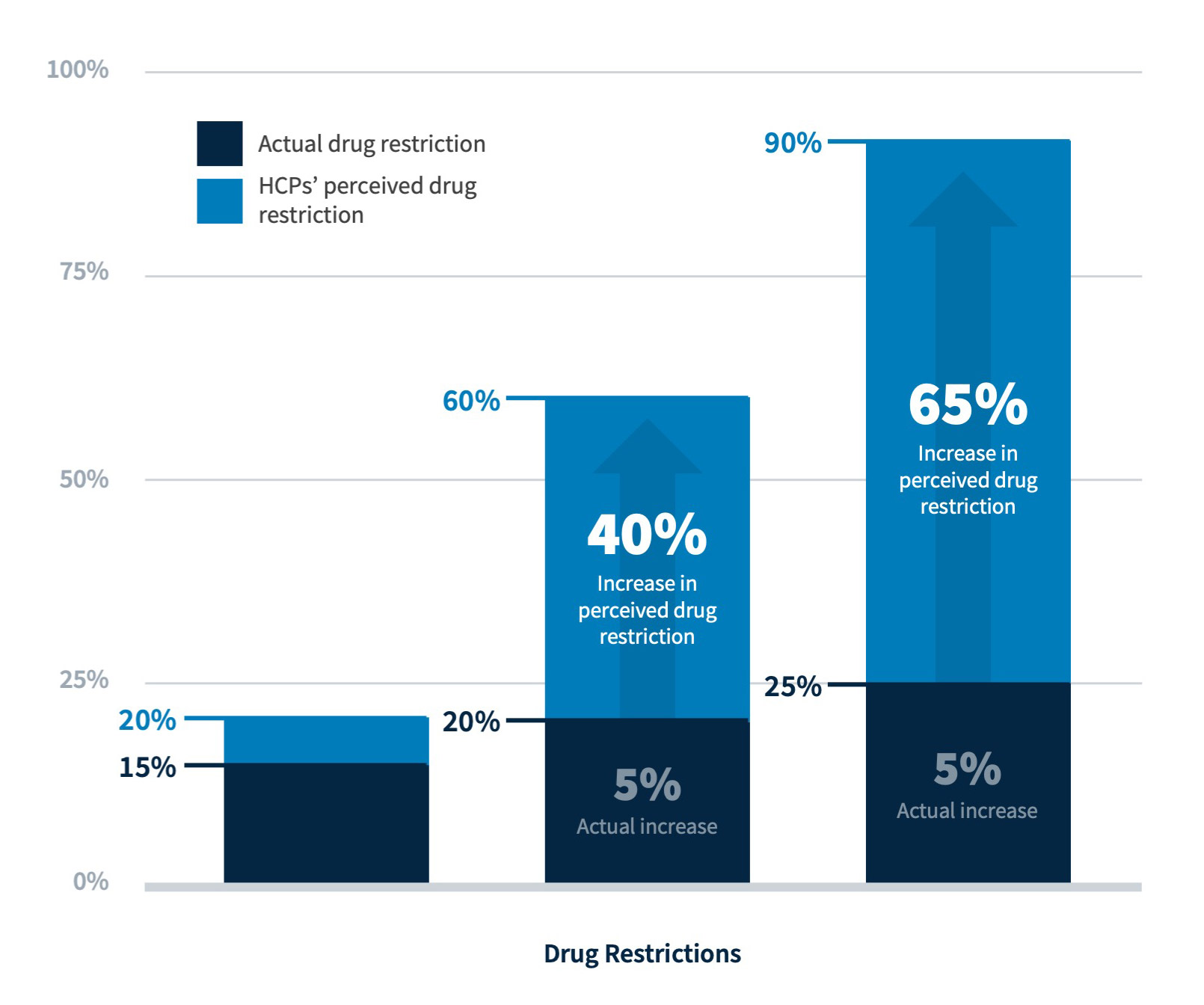Master the HCP cost and coverage conversation

In the past, pharmaceutical sales coaches only recommended talking about market access if a healthcare provider asked about it. Outdated coaching advice sounded like this: “Make sure you address access only if the HCP brings it up. Our focus should be clinical and how unique our product is.”
But this advice won’t cut it in today’s market. When you need to make your brand stand out from the competition — whether it’s another branded product or a generic — pharma sales representatives can’t afford to treat pharma cost and coverage like a taboo subject.
If avoidance is still your sales force’s primary approach, rethink what’s possible when it comes to market access messaging.
Research shows that with the right market access coaching and applications, you can boost your Rx volume and share growth by actively showing HCPs where they can prescribe your product.
Here are four tips on how to use hyper-relevant cost and coverage messaging to handle common HCP objections.
1. Deliver the best message before they ask
Instead of waiting for an HCP to ask how much your drug will cost out of pocket or if their patients’ most popular healthcare plans cover it, take the lead. Start the access conversation by presenting the most positive message you have available.
This requires some pre-call planning for each HCP you target. Ahead of that next in-office visit or email, determine the optimal market access message your HCP qualifies for, taking into consideration these three key factors:
- Formulary data
- Claims/transaction data
- Your brand’s specific market access pull-through strategies
If you only use one source of data (e.g., formulary data) in your pre-call planning, you run the risk of delivering a message that misses the mark. The AI-driven Access Genius algorithm serves up the optimal personalized market access messaging every time, taking the guesswork out of the equation.v
2. Choose your percentages wisely
Perception of your access is everything. When communicating pharma cost and coverage information, use percentages carefully.
Consider how different percentages can change an HCP’s perception of drug restrictions. In a study conducted by a major pharma brand, it was discovered that even a small increase in drug restrictions led to a big change in how HCPs viewed their drug’s accessibility.

- When the restriction was 15%, HCPs believed it was 20%.
- When the restriction was 20%, HCPs believed it was 60%.
- When the restriction was 25%, HCPs believed it was 90%.
Clearly, drug restrictions exponentially drive HCP misperceptions of coverage.
Similar perception issues arise in the case of market access. Market research shows that numbers greater than 65% are impactful with HCPs. So, for example, the message “66% of your patients are covered” would likely be viewed in a positive light.
If that percentages decreases to 50%-65%, a smarter way of delivering the information would be, “The majority of patients have access.” When access of your brand for a specific HCP falls below 50%, show a general headline about available plans.
3. Be prepared to pivot the pharma cost and coverage conversation
No matter how your cost-and-coverage conversation develops, an HCP can toss out a question or concern that might not have been on your radar. Sales representatives know how to improvise, and with personalized market access messaging, they can do so with more confidence and data-backed information.
To switch to the right message fast, you need a refined arsenal of message types from which to choose. Here are a few scenarios to show you what this might look and sound like:
- First, you open the conversation with a “Proactive” message, if possible, one that amplifies a positive change in your product’s formulary position or proves to the HCP that you already have favorable access.
- If the HCP then asks about specific carriers and coverage, you can deliver a more “Responsive” message. Use a commercial message to talk about their privately insured patients, or use a message that specifically refers to patients on Medicare or Medicaid.
- And then there are “Flexible” message types. If the HCP brings up one of your key competitors, show them how your access compares for their actual patient population. And of course, speak the HCP’s language when you’re talking about local plans. You can use a plan list message to show them the plans that provide access to your product.
In Access Genius Messaging, your HCP qualifies for each market access message type based on data and business rules established by your brand’s strategy.
4. Use reinforcements so your market access messaging hits home
While you’re still in the HCP’s office, reinforce your best message and any other information you discussed by handing them or their staff a printed leave behind.
Continue to engage them with an approved email that includes not only clinical information but also HCP-specific market access messaging. Access Genius makes multichannel delivery easy by working with trusted partners including Veeva, Doximity, Biopharm, Relevate, QuickPivot, Aktana and Medscape.
Prepare with the most relevant information available
Sidestepping pharma cost and coverage objections is no longer acceptable. Sales representatives must manage them head on. To do so effectively, HCPs must believe what you tell them, which means giving them data-backed, HCP-specific information about their patient population.
Think about objections related to market access that you’re likely to hear. How equipped are you or your sales force to handle them, guide the conversation and pivot your market access message?
Ready to level up your pharma cost and coverage conversations?
